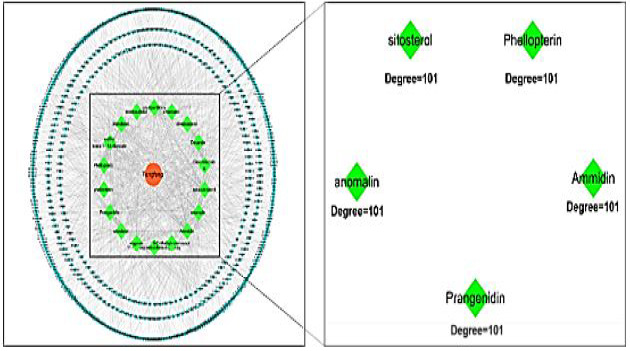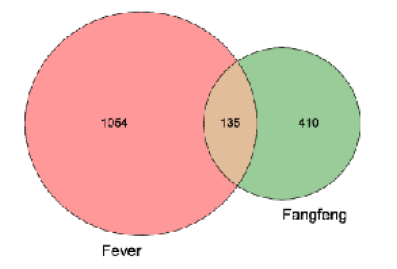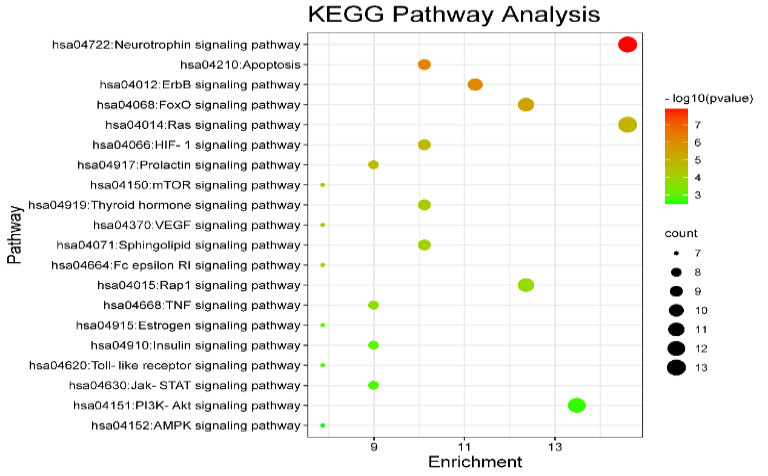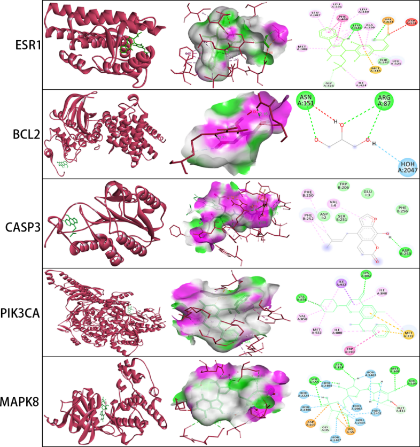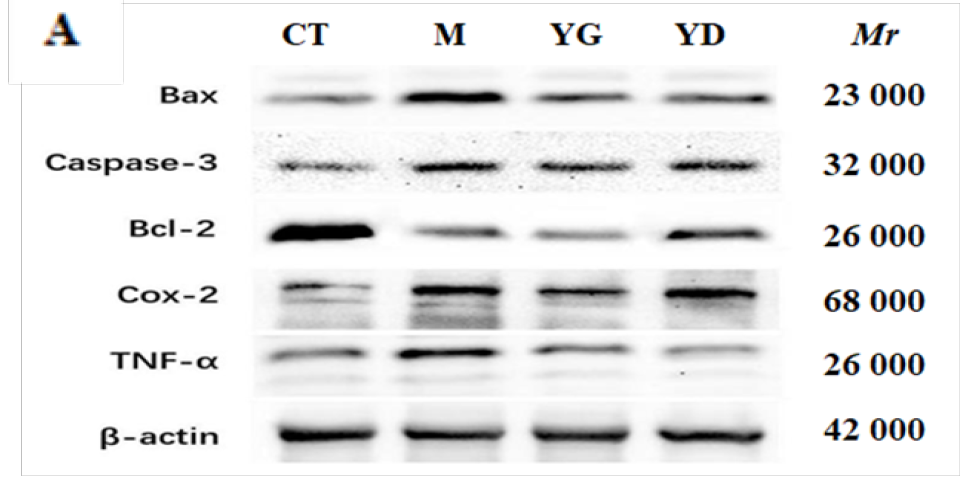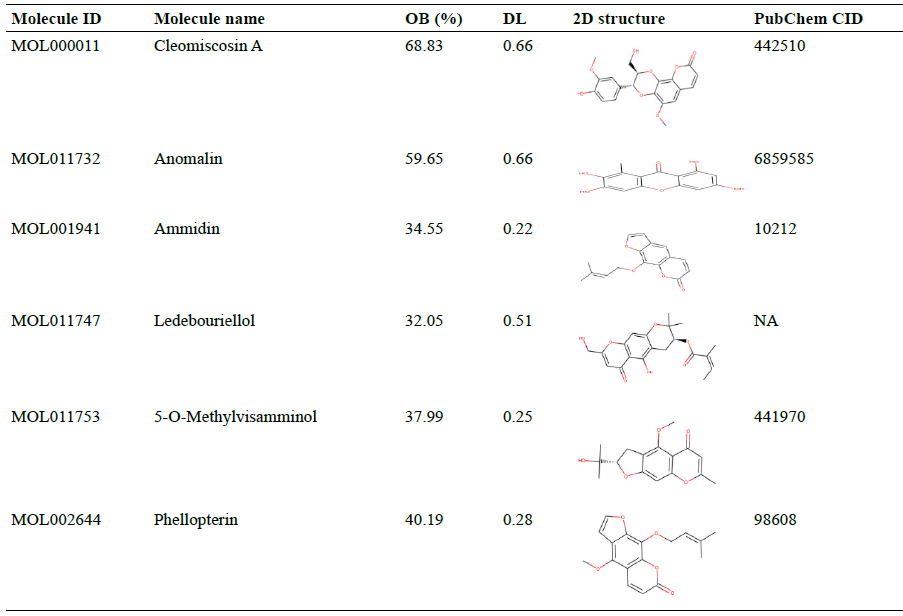Mechanism of Antipyretic Effect of Saposhnikoviae Radix Based on Network Pharmacology and Experimental Verification
Taidong Wang1, Xiaowei Huang1, Jian Huang2, Guangfu Lv3 and Zhe Lin1*
1College of Pharmacy, Changchun University of Chinese Medicine, Changchun, 130117, China
2National Engineering Laboratory for Druggable Gene and ProteinScreening, Northeast Normal University, Changchun 130117, China
3Jilin Ginseng Academy, Changchun University of Chinese Medicine, Changchun, 130117, China
Fig. 1.
TCM-ingredient-target network diagram.
Fig. 2.
The intersection of SR-Fever targets.
Fig. 3.
PPI network of SR-fever targets.
Fig. 4.
Analysis of the KEGG pathway of antipyretic effect of SR.
Fig. 5.
Molecular docking visualization results.
Note: From left to right, the above figure is the 3D overall figure of molecular docking, hydrogen bond interaction figure and 2D interaction diagram; in the figure on the left side, red is the target protein structure, and green is the molecular structure of the ingredient; in the figure at the middle position, green is the hydrogen bond donor, and purple is the hydrogen bond acceptor.
Fig. 6.
The expression levels of COX2, TNF-α, BAX, caspase3 and BCL2 proteins in the hypothalamus of rats in each group. For details of groups, please refer to Table III.
Table I.
Screening results active ingredients of SR.







